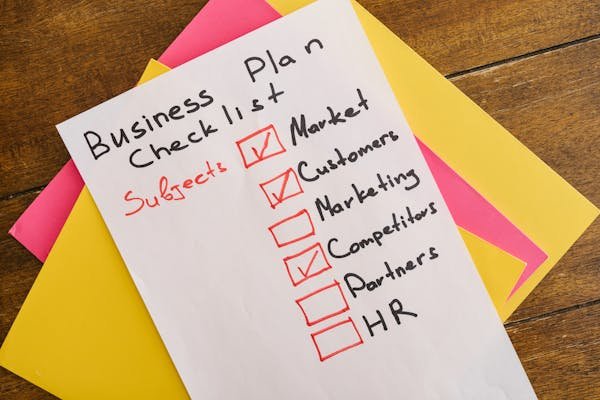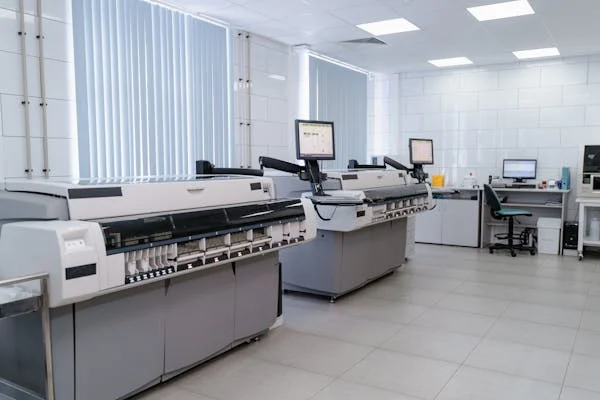Innovation is the engine that drives growth. And at the heart of innovation lies R&D—Research and Development. But how strong is the actual link between R&D spend and market leadership? Is it hype or hard truth? In this data-driven guide, we dive into 30 powerful statistics that prove just how closely tied research budgets are to a company’s position at the top. Each stat is explored deeply, with practical, real-world insights you can apply whether you’re running a startup or steering a global brand.
1. Companies in the top quartile of R&D spending are 3.5x more likely to be market leaders
Why the Top Spenders Usually Win
When you look at companies leading their markets—think Apple, Amazon, or Samsung—they aren’t just innovative. They are relentless in how much they invest in developing new products, improving processes, and staying ahead of their competition. Companies in the top 25% of R&D spenders are more than three times as likely to dominate their markets. This isn’t a coincidence.
The reason is simple. Innovation fuels differentiation. Differentiation builds demand. And sustained demand leads to market leadership.
Breaking the Cycle of Short-Term Thinking
One of the biggest traps companies fall into is short-term cost-cutting, especially when budgets are tight. But the firms that keep funding R&D, even during hard times, are the ones that build a solid foundation for the future. They don’t just survive—they pull away from the pack.
Actionable Advice
- Benchmark your R&D spend against top competitors in your industry.
- If you’re in the bottom half, build a roadmap to gradually increase investment over the next 3–5 years.
- Focus on high-impact innovation. Not all R&D spending needs to be massive—small iterative changes can create big results.
2. The top 10 R&D spenders account for over 35% of global private R&D investment
Power is Concentrated—And It’s Intentional
Take a look at companies like Alphabet, Meta, and Microsoft. These businesses alone make up a massive portion of global private R&D spending. When 10 companies account for over a third of all R&D dollars, it’s clear that serious investment equals serious power.
Why Scale Matters
These companies have figured out how to scale their innovation. They’ve turned R&D into a competitive weapon. Instead of using it just for incremental improvements, they use it to redefine categories—think Google’s AI push or Apple’s move into health tech.
Actionable Advice
- Study how these big players structure their R&D departments.
- Consider collaborating with universities, research hubs, or government-funded programs if you can’t match their budgets.
- Invest in building internal capabilities so R&D becomes part of your DNA, not just a side function.
3. Market leaders spend an average of 7–10% of revenue on R&D annually
The Sweet Spot for Innovation Budgets
Spending 7–10% of your revenue on R&D might sound steep, especially for smaller firms. But for those chasing leadership, this range is not just a target—it’s a benchmark. It reflects a commitment to future growth and a mindset that prioritizes learning and innovation over cost control.
What Happens When You Underspend
When companies fall below this benchmark, innovation slows. Products become outdated. Competitors catch up—or worse, pass you. It’s like cutting fuel to a jet engine mid-flight.
Actionable Advice
- Review your R&D-to-revenue ratio quarterly.
- Build a phased plan to increase investment by 1–2% each year.
- Track ROI from R&D projects to justify budget increases to stakeholders.
4. 80% of firms that led in market share over a decade showed consistent R&D investment increases
Long-Term Investment Pays Off
Market leaders don’t just invest in R&D occasionally—they make it a habit. Over 10 years, the firms that consistently boosted their R&D budgets saw better returns, stronger product pipelines, and more stable market positions.
Why Consistency Beats Spikes
One-off investments don’t build momentum. Consistency does. By keeping R&D spending on a gradual incline, firms give teams time to experiment, learn from failure, and deliver real results.
Actionable Advice
- Create a 10-year R&D vision that aligns with your long-term business goals.
- Protect your R&D budget from yearly fluctuations tied to short-term profit targets.
- Use rolling funding models to support long-term R&D programs.
5. Every 1% increase in R&D intensity (R&D/revenue) is linked with a 1.3% increase in long-term shareholder value
The Value Multiplier
Investing in R&D doesn’t just make good products—it makes money. A modest 1% rise in R&D intensity has a measurable impact on shareholder value. This stat reinforces the financial logic behind innovation spending.
Aligning Finance With Innovation
Finance teams often see R&D as a cost center. But when you connect R&D intensity with shareholder value, it reframes the conversation. R&D becomes a tool for growth, not just an expense.
Actionable Advice
- Integrate R&D metrics into investor communications.
- Run projections that show how increased R&D will drive valuation growth.
- Use this data to defend R&D budgets in board discussions.
6. In tech, the top 5 R&D spenders capture 60% of industry profits
Innovation Is a Profit Machine
In technology, R&D spend isn’t just about staying relevant—it’s about owning the profit pool. The five biggest R&D investors dominate their industries not just in sales, but in margins too.
Why This Happens
Innovative firms attract top talent, create premium products, and build ecosystems that lock customers in. All of this is powered by R&D.
Actionable Advice
- If you’re in tech, measure your R&D spend relative to the top five players.
- Double down on features that create stickiness—things that customers don’t want to live without.
- Shift your thinking from cost control to value creation.
7. Pharma companies allocate up to 20% of revenue to R&D to maintain competitive edge
A Matter of Survival
In the pharmaceutical world, innovation isn’t optional. It’s the cost of doing business. With patent cliffs, strict regulations, and intense competition, top pharma firms commit massive resources to R&D.
The Patent Pipeline
Pharma relies on a steady stream of new drugs. That means long development cycles, high failure rates, and regulatory hurdles. The only way to navigate all that? Deep investment in research.
Actionable Advice
- If you’re in a long-cycle industry, expect to spend more on R&D and wait longer for returns.
- Prioritize data infrastructure—good data shortens development time.
- Don’t shy away from risky bets. One success can pay for dozens of failures.
8. 9 out of 10 most innovative companies by BCG also ranked high in R&D spending
Innovation and Investment Go Hand in Hand
There’s a clear pattern here. The most innovative companies aren’t just creative—they’re consistent investors in R&D. It’s not about throwing money at ideas. It’s about funding the right process.
R&D as a Culture
These firms don’t separate innovation from daily operations. They embed R&D thinking into every team, from product to marketing. It’s a cultural shift, not just a budget line.
Actionable Advice
- Don’t let R&D live in a silo. Bring marketing, design, and customer success into the innovation process.
- Celebrate R&D wins and learnings publicly to build internal momentum.
- Create small R&D pods across departments to foster a culture of experimentation.
9. A $1 billion increase in R&D correlates with a 0.5–1% gain in global market share, depending on industry
How Money Turns Into Market Position
This stat reveals the direct market value of strategic R&D. For every billion dollars funneled into research and development, companies often gain up to 1% of global market share. While the exact percentage varies by industry, the trend is clear—more R&D spend leads to greater presence.
Why the Return Matters
This is about strategic investment. You’re not throwing money into a black hole. You’re exchanging capital for customer attention, better products, and positioning that competitors struggle to match.

Actionable Advice
- Use this benchmark to evaluate large-scale R&D projects: how much share gain will $100M deliver?
- Target R&D toward underserved markets or fast-growing regions where share gains are easier to earn.
- Set clear share-growth goals linked directly to R&D initiatives.
10. Top-quartile R&D firms are 2x more likely to launch breakthrough products
The Power of Breakthrough Thinking
Firms that invest heavily and smartly in R&D don’t just create better versions of what already exists—they reinvent the category. These are the companies launching things we’ve never seen before. And it’s not luck. It’s process and patience.
Getting Beyond Incrementalism
Many companies get trapped in incremental innovation—safe updates, small tweaks. But real growth comes from bold bets. The top R&D firms have the structure to support moonshot thinking without sinking the ship.
Actionable Advice
- Split your R&D budget into core (60%), adjacent (25%), and breakthrough (15%) projects.
- Set up an internal “lab” or venture studio that operates outside your core business unit.
- Celebrate failed breakthrough attempts just as loudly as wins to keep morale high.
11. Firms that cut R&D during recessions are 3x more likely to lose market leadership
Short-Term Cuts, Long-Term Losses
Recessions test a company’s priorities. And cutting R&D might help margins temporarily—but the long-term damage can be irreversible. Leaders who cut too deep often lose their edge permanently.
Holding Steady During Storms
The most successful companies treat R&D like a fixed cost, not a variable one. They adjust other levers but keep innovation alive, knowing that downturns are prime times to widen the lead.
Actionable Advice
- Build a recession-proof R&D fund—a budget reserve only used to continue R&D in downturns.
- Communicate the long-term vision to stakeholders when others panic.
- Focus recession R&D on cost-reducing innovations and customer pain points.
12. Market leaders invest 2x more in long-term R&D projects versus laggards
Playing the Long Game
Market leaders know the difference between solving today’s problems and tomorrow’s opportunities. That’s why they fund long-term R&D projects at double the rate of their slower peers.
Vision Over Immediate Returns
These projects may take 5–10 years to show results, but they’re often the source of breakthrough technologies, new revenue streams, or category-defining shifts.
Actionable Advice
- Establish a long-term innovation council to oversee horizon-3 initiatives.
- Use portfolio thinking to balance quick-win projects with strategic long-term bets.
- Fund these projects with flexible capital that isn’t tied to quarterly targets.
13. Companies that continuously increase R&D spend outperform the S&P 500 by 4% annually
Beating the Market With Innovation
This isn’t just theory—it’s market data. Companies that steadily increase R&D year over year tend to deliver higher shareholder returns than even top-performing indexes.
Building Compounding Innovation
The key is continuous investment. Not explosive one-off spikes. Over time, each year’s learning builds on the last. The result is a compounding engine of new products, services, and efficiencies.
Actionable Advice
- Build R&D growth into your 3-year strategic plan.
- Measure compounding impact by tracking how many products were built on past R&D efforts.
- Show stakeholders a rolling 5-year ROI of innovation to get buy-in for increased spend.
14. 70% of Fortune 100 companies increased R&D spending even in economic downturns
Confidence in Crisis
Top-performing companies don’t freeze when the economy slows. They lean in. The majority of Fortune 100 firms continue boosting R&D, even when others are pulling back.
Why This Works
In downturns, customer needs shift rapidly. Those who understand and respond through innovation build deeper loyalty. Meanwhile, competition often slows, creating open ground.

Actionable Advice
- Use downturns to reallocate R&D toward customer-focused solutions.
- Build faster feedback loops from market to R&D team.
- Launch low-cost pilots and prototypes to learn while spending wisely.
15. High R&D-to-sales ratio is a strong predictor of future profitability in tech and healthcare
Ratio That Reveals Growth Potential
When you compare R&D spend to total sales, the ratio tells you a lot about future profitability—especially in high-growth sectors like tech and healthcare. A higher ratio often signals that a company is investing in products and services that will drive tomorrow’s revenue.
Reading the Signal Right
It’s not just about spending more—it’s about smart allocation. Companies with high R&D-to-sales ratios tend to focus on platforms, patents, and pipelines that open new doors rather than just patch old ones.
Actionable Advice
- Track your R&D/sales ratio quarterly and benchmark against industry leaders.
- Don’t obsess over short-term profitability if you’re building a high-growth product.
- Share your ratio—and what it signals—with investors who value long-term growth.
16. Firms spending over $5 billion/year on R&D are 4x more likely to hold over 1,000 patents
Investment Turns Into Intellectual Property
Heavy R&D spenders aren’t just creating more products—they’re building defensive moats. Holding thousands of patents gives these companies not just competitive edge but legal and strategic power.
Patents as a Strategy
IP builds leverage. It can be licensed, defended, or used to block competitors. Top R&D firms build patent strategies alongside product strategies.
Actionable Advice
- Develop a formal IP strategy that aligns with your core innovation themes.
- Set targets for yearly patent submissions tied to R&D output.
- Work with legal teams early in the development cycle to capture novel ideas before competitors do.
17. The top 3 R&D investors in automotive have consistently led global vehicle sales
Driving Innovation to Drive Sales
In the auto industry, the race isn’t just about speed on the road—it’s about speed in the lab. The biggest R&D investors, including companies like Toyota, Volkswagen, and Ford, continue to dominate global sales because they never stop improving and evolving.
What Keeps Them Ahead
From hybrid engines to autonomous features, their R&D efforts have redefined consumer expectations. They invest not just in new models but in new technologies, platforms, and experiences.
Actionable Advice
- Prioritize innovation that improves user experience—safety, efficiency, and comfort.
- Invest in scalable R&D—platform-based vehicle architecture can extend across multiple models.
- Monitor customer behavior closely to align R&D with real-world usage and expectations.
18. 75% of AI market leaders invested more than 15% of budget into R&D
Dominating a Frontier Technology
In the fast-moving world of artificial intelligence, leaders understand that breakthrough innovation doesn’t come from minor tweaks. It takes deep, committed investment—and most of them are spending more than 15% of their entire budget on R&D.
Why AI Demands More
AI development is complex. It requires talent, compute power, data infrastructure, and experimentation. Companies that dominate AI markets today made bold moves early and continued pushing forward.
Actionable Advice
- If you’re building in AI, allocate at least 10–15% of your budget toward R&D.
- Build or acquire in-house AI talent instead of outsourcing core development.
- Invest in proprietary datasets and machine learning pipelines to gain a competitive advantage.
19. R&D-intensive companies see 2–3x more productivity growth over 5 years
Innovation Powers Efficiency
R&D doesn’t just lead to cool new products—it also makes companies more productive. Businesses that consistently invest in R&D grow their output per employee at 2–3 times the rate of those that don’t.

The Hidden Benefit of Innovation
Improved tools, better processes, and smarter automation all stem from focused research. Over time, these changes stack up to create leaner, faster, and more resilient organizations.
Actionable Advice
- Track internal productivity metrics linked to R&D outcomes (e.g., development cycles, cost per unit, time to market).
- Develop internal innovation programs that solve operational bottlenecks.
- Encourage cross-department collaboration between R&D and operations.
20. For every dollar spent on R&D, top firms generate $2.3 in new revenue
The Revenue Engine
This stat lays it out simply—R&D isn’t a sunk cost. For the best companies, it’s a reliable source of future earnings. Investing $1 leads to over $2 in new business. That’s a strong return.
Scaling What Works
The key is not just inventing—it’s commercializing. Top-performing companies have the teams, processes, and partnerships to take R&D outcomes to market efficiently.
Actionable Advice
- Build commercialization plans into every major R&D initiative from day one.
- Align R&D teams with sales and marketing early in the development cycle.
- Track revenue attribution by R&D project to identify which types of innovations yield the best ROI.
21. 85% of new product revenues in market-leading firms come from R&D pipelines
The Pipeline That Powers Growth
In top companies, most new product revenue comes from ideas born in the R&D lab. This proves how central research is to staying relevant and growing fast.
Making the Pipeline Flow
A strong R&D pipeline doesn’t just have good ideas—it has process, governance, and talent to move those ideas into real-world products quickly.

Actionable Advice
- Treat your R&D pipeline like a product funnel—qualify ideas, test assumptions, and move winners forward fast.
- Hold monthly cross-functional pipeline reviews to evaluate stage progression and allocate resources.
- Use customer co-creation models to increase success rates of new concepts.
22. The top 20 R&D firms contribute over 60% of patent filings in their sectors
Controlling the Innovation Narrative
These companies don’t just lead in products—they shape the entire industry. Through consistent R&D and aggressive patent strategies, they own the foundational technologies everyone else builds on.
Protecting Innovation as a Strategy
Owning patents doesn’t just offer protection—it also provides monetization opportunities and negotiating leverage in partnerships or legal disputes.
Actionable Advice
- Establish IP milestones as part of your R&D project lifecycle.
- Audit your existing IP portfolio annually to identify gaps and opportunities.
- Train engineers and researchers on IP basics to increase awareness and capture more ideas.
23. Continuous R&D growth leads to 50% higher average market capitalization
Innovation Builds Brand and Value
Companies that steadily increase R&D budgets see significantly higher market value. This isn’t just about products—it’s about signaling to the market that you’re a growth company with long-term upside.
Why Investors Reward R&D
The market sees R&D as a signal of future readiness. It reflects ambition, vision, and capability. As long as you’re able to execute, that confidence translates into a premium valuation.
Actionable Advice
- Present R&D growth trends in your investor pitch or earnings calls.
- Highlight pipeline milestones and expected outcomes in financial models.
- Show how R&D supports brand-building, competitive differentiation, and defensibility.
24. In biopharma, market leaders spend 1.8x more on R&D than their nearest competitors
The Research Race
In the biopharma industry, the battle is often won in the lab. Market leaders spend nearly twice as much as their closest rivals, and that difference shows up in faster approvals, better drugs, and deeper pipelines.
Why the Gap Grows
The more these companies invest, the faster they can move through clinical trials, attract top scientists, and lock in exclusive rights. That gap becomes harder to close over time.
Actionable Advice
- Benchmark your R&D spend against the top 3 companies in your category.
- Build R&D alliances with universities, startups, or CROs to stretch your dollar further.
- Make clinical data transparency a priority to speed up trust-building and regulatory approval.
25. Firms with high R&D investment show 40% less volatility in long-term earnings
Innovation as a Stabilizer
It may sound counterintuitive, but spending more on R&D actually reduces risk. Companies with stronger innovation pipelines tend to face fewer surprises because they’re constantly refreshing products and adapting to change.
Predictability Through Preparation
R&D acts like a buffer—when markets shift, these companies have already started building solutions for what comes next.

Actionable Advice
- Monitor the diversity and maturity of your R&D portfolio to reduce earnings shocks.
- Use scenario planning to test how your innovation roadmap performs under different market conditions.
- Share long-term earnings models tied to R&D cadence with your financial stakeholders.
26. 90% of firms with sustained R&D increases maintain leadership across product cycles
Innovation Is How You Stay on Top
Product cycles come and go. What keeps companies at the top is the ability to refresh, reimagine, and relaunch—again and again. That’s what R&D enables. And the firms that grow their investment year after year are the ones that continue to lead in every wave.
No One-Hit Wonders
Sustained R&D separates the leaders from the lucky. It builds depth into a company’s innovation strategy and ensures they’re never reliant on just one product or one big moment.
Actionable Advice
- Track your product cycles and overlap them with R&D initiatives to identify lead-lag patterns.
- Plan your R&D not only for what’s next, but for what comes after that.
- Develop a “next-gen” roadmap across your product lines—one that’s always evolving.
27. First-mover advantage is 70% more likely when backed by above-average R&D funding
Being First Requires Fuel
It’s not enough to have a good idea. To be the first to market, you need speed, resources, and focus—all of which are made possible through serious R&D investment. Companies that allocate above-average resources are far more likely to lead the charge.
The Power of Timing
In many industries, the first to launch sets the rules. They define the customer experience and often grab the lion’s share of media attention, funding, and early adopters.
Actionable Advice
- Use R&D to compress time-to-market for your highest-potential ideas.
- Invest in agile development frameworks that allow for faster iteration and pivoting.
- Focus on categories where timing is crucial, and use data to find the ideal launch window.
28. In consumer electronics, the top R&D spender typically leads the market in unit sales
Investment Converts to Volume
In consumer tech, scale matters. And the company that leads in R&D often ends up leading in unit sales too. That’s because they set trends, define user interfaces, and push new categories into the mainstream.
How R&D Wins the Shelf War
Great R&D leads to smarter devices, sleeker designs, and better ecosystems. These are the things that drive sales at scale. The companies that prioritize them win the retail race.
Actionable Advice
- Prioritize user-centered R&D—features that make real-world usage easier and more delightful.
- Invest in cross-product compatibility and ecosystem thinking to increase device attachment.
- Track R&D project conversion rates into actual SKUs and retail placements.
29. Market-leading firms in software spend 3x more per engineer on R&D than followers
The Talent Multiplier
Software firms that dominate their niches don’t just hire more engineers—they invest more deeply in each one. They provide better tools, more time for experimentation, and stronger support for testing and learning.
Why This Works
Great engineers thrive in environments where they can experiment. When you give them space, data, and the right problems to solve, they deliver game-changing ideas.
Actionable Advice
- Audit your R&D investment per technical team member—are you enabling or just employing?
- Increase tooling, sandbox environments, and R&D time allowances for dev teams.
- Hold quarterly innovation sprints focused on solving a single high-priority user problem.
30. Firms with 10+ years of R&D leadership experience 3x greater brand equity growth
R&D Builds More Than Products
Over time, deep investment in R&D shapes not just what you sell, but how people see you. It builds trust, authority, and credibility. That’s why companies with long-term R&D leadership often see far stronger growth in brand value.
The Reputation of Innovation
Consumers, investors, and partners notice who leads and who follows. They associate long-term R&D with reliability, creativity, and category leadership. This perception fuels loyalty and drives premium pricing power.

Actionable Advice
- Build your R&D story into your brand narrative and marketing.
- Publicize innovation milestones, patents, and case studies to reinforce your position.
- Engage in thought leadership around emerging tech to position your company as a forward-thinker.
Conclusion
There’s no shortcut to market leadership—but there is a clear path. Companies that commit to R&D not as a line item, but as a strategic pillar, pull ahead and stay ahead. They don’t fear the future—they create it.
Whether you’re a founder building your first product or a CEO steering a legacy brand through transformation, these data-backed insights show you where to place your bets. Invest in your ideas. Invest in your people. Most of all, invest in your ability to innovate—because in today’s world, that’s the clearest signal of tomorrow’s success.





















